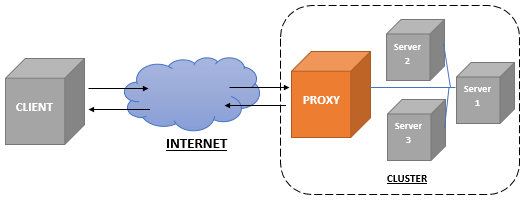
Kubernetes (container engine) by Google, Inc. is licensed under CC

Kubernetes (container engine) by Google, Inc. is licensed under CC
Client applications can be configured to connect to services directly.
Client applications can be configured to connect to services via a gateway.
A client might be a web page running in a browser or a mobile phone app.

The diagram above demonstrates how an API gateway sits between a client and a collection of services.
An API Gateway introduces latency but provides a number of benefits:
Here we use nginx as the basis of our reverse proxy. In the Docker file we specify that the /etc/nginx/conf.d/default.conf file in the nginx image will be replaced by a custom my-server.config
Dockerfile
The proxied server URLs are set using the proxy_pass directive.
my-server.conf
Kubernetes is a platform for managing containerized workloads.
The yaml file below ensures that there are two copies of the books image, two copies of the books-react image and one copy of the books-reverse-proxy image running at all times.
The books-reverse-proxy image is the API Gateway.
The yaml file below ensures that clients are only able to connect to the API Gateway.
The books container image provides a REST API Service.
The books-react container image provides a React App.
Kubernetes cluster example
Kubernetes hosting is offered by Microsoft (Azure), Amazon (AWS) and Google (Google Cloud).
Kubernetes can be run on a developer's laptop using Docker Desktop or Minikube.
Kubernetes can be run on a collection of Raspberry Pi computers using K3s.
Shown below is a copy of Docker Desktop hosting the Kubernetes cluster described above.

Docker Desktop